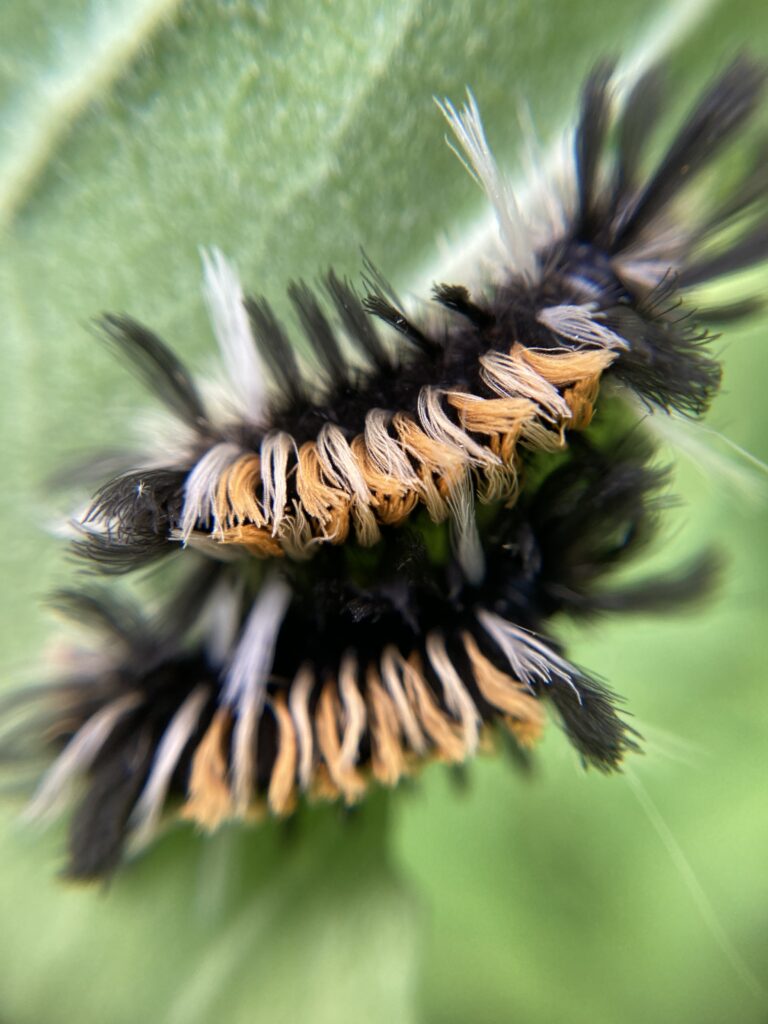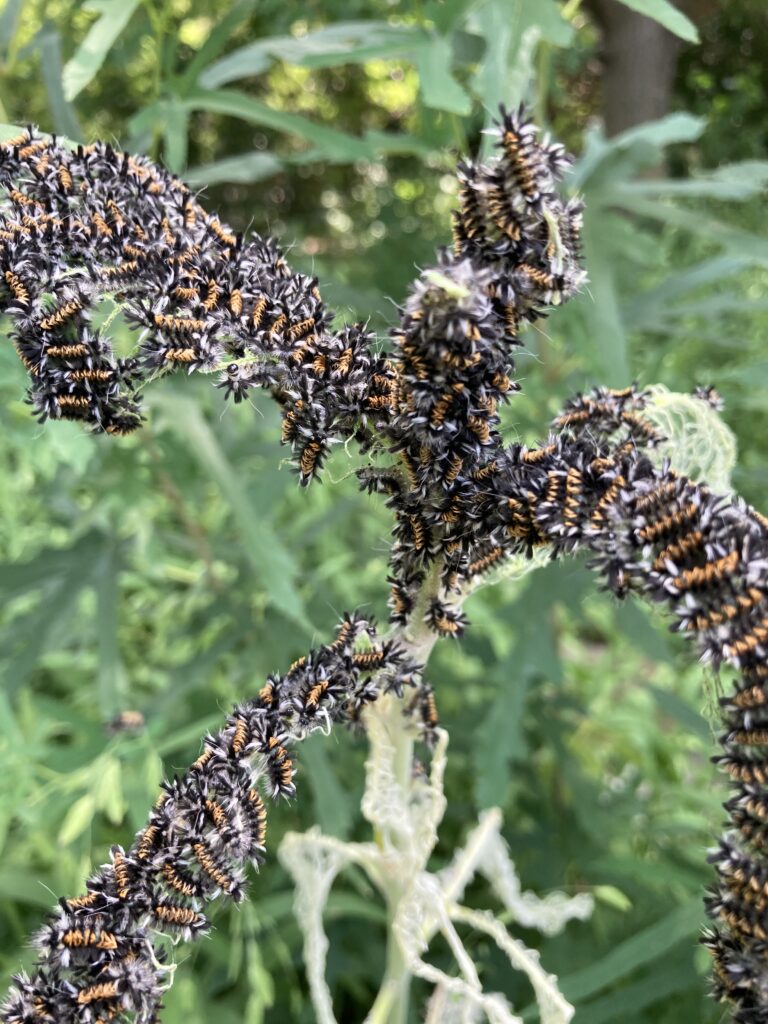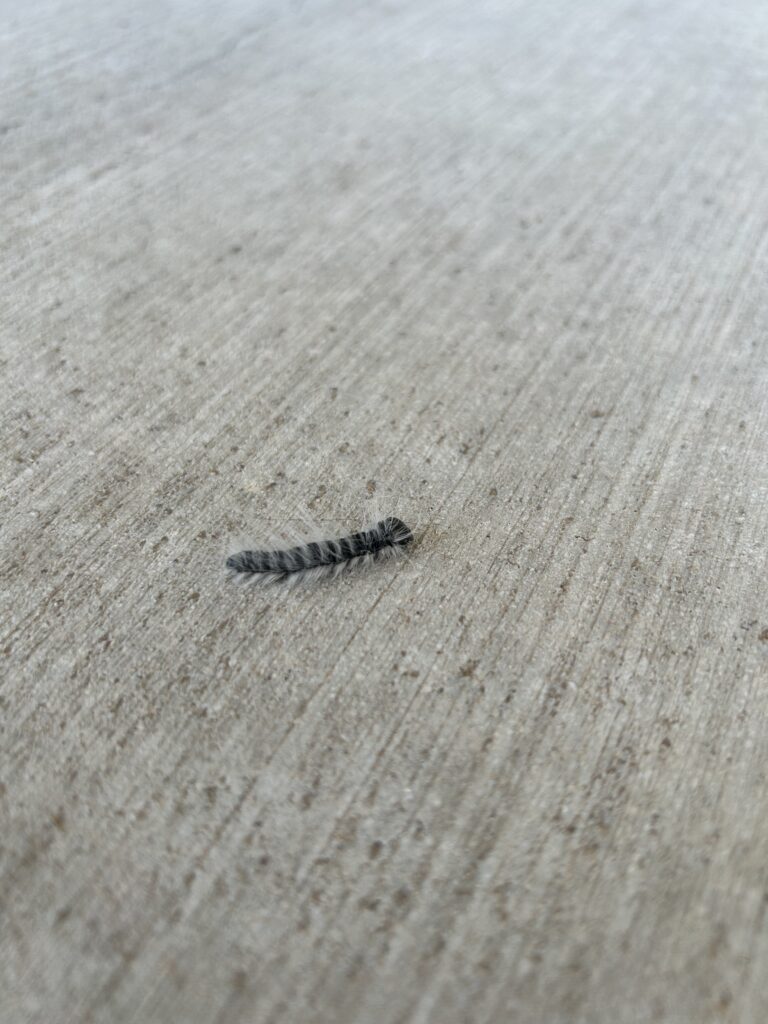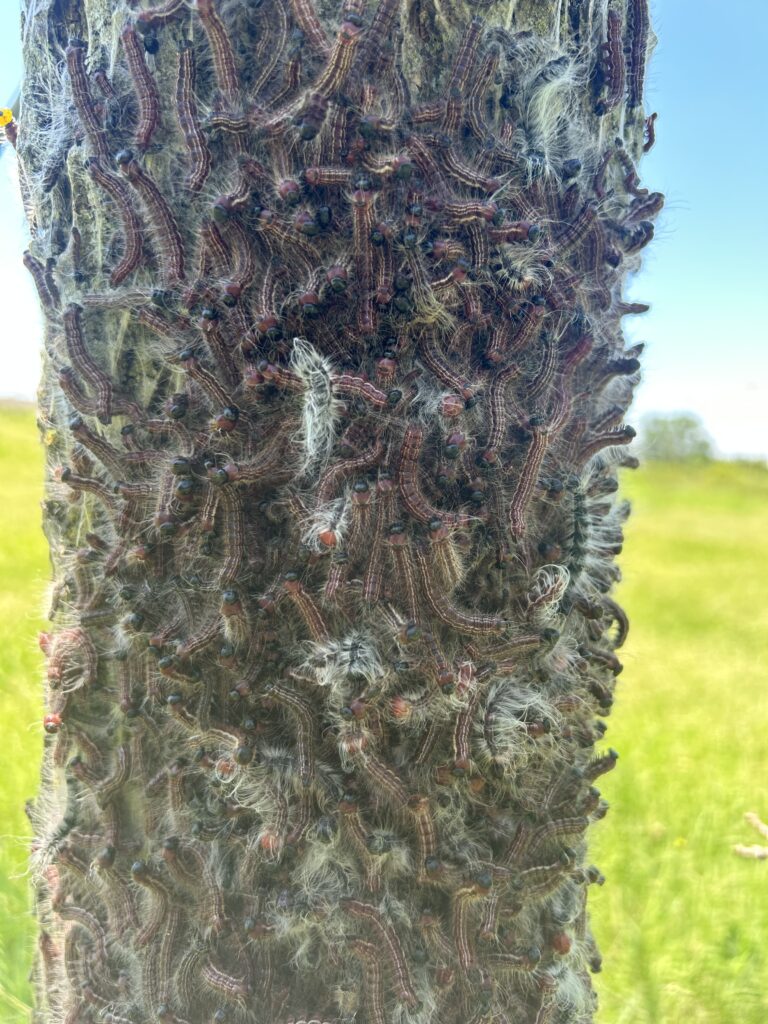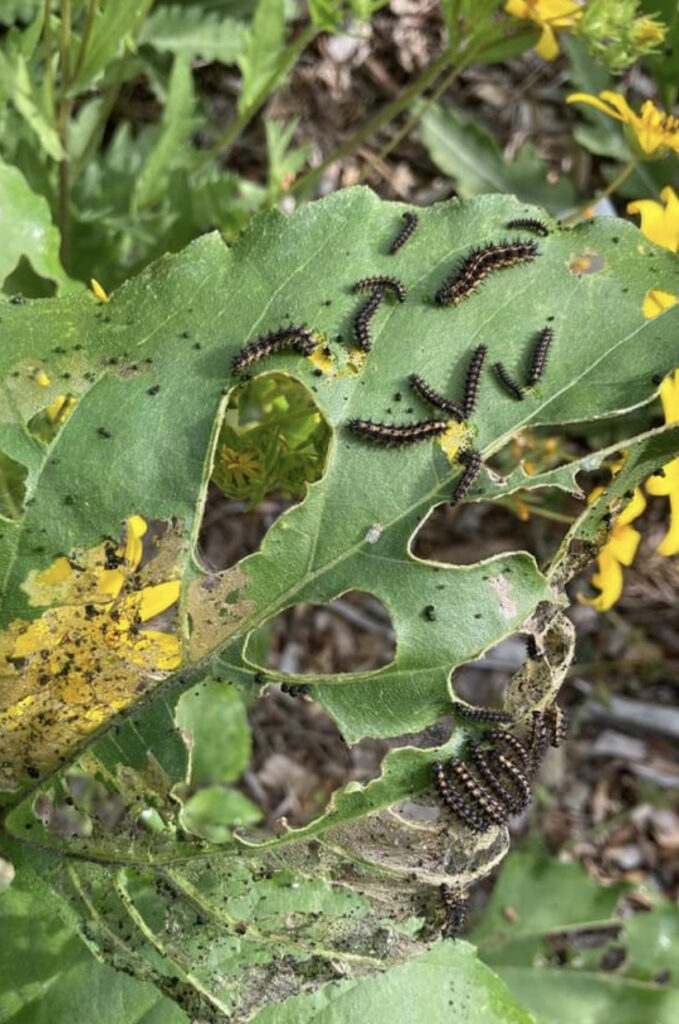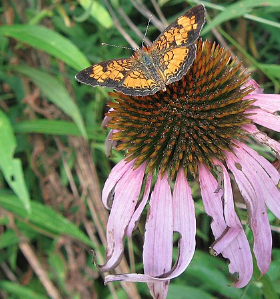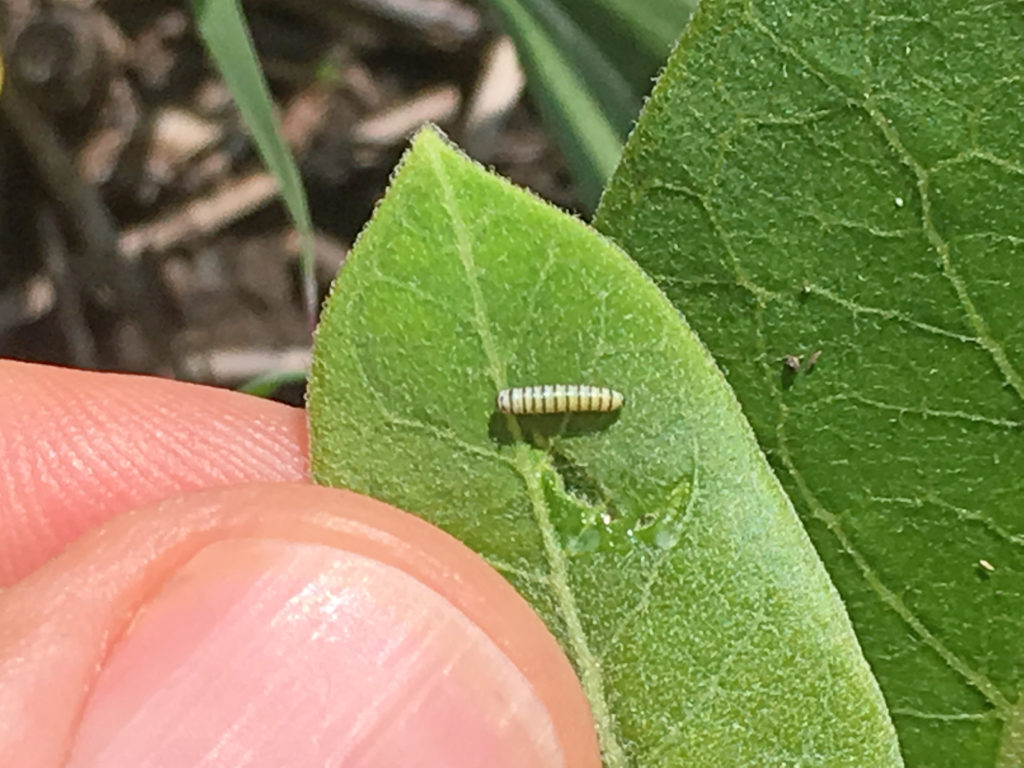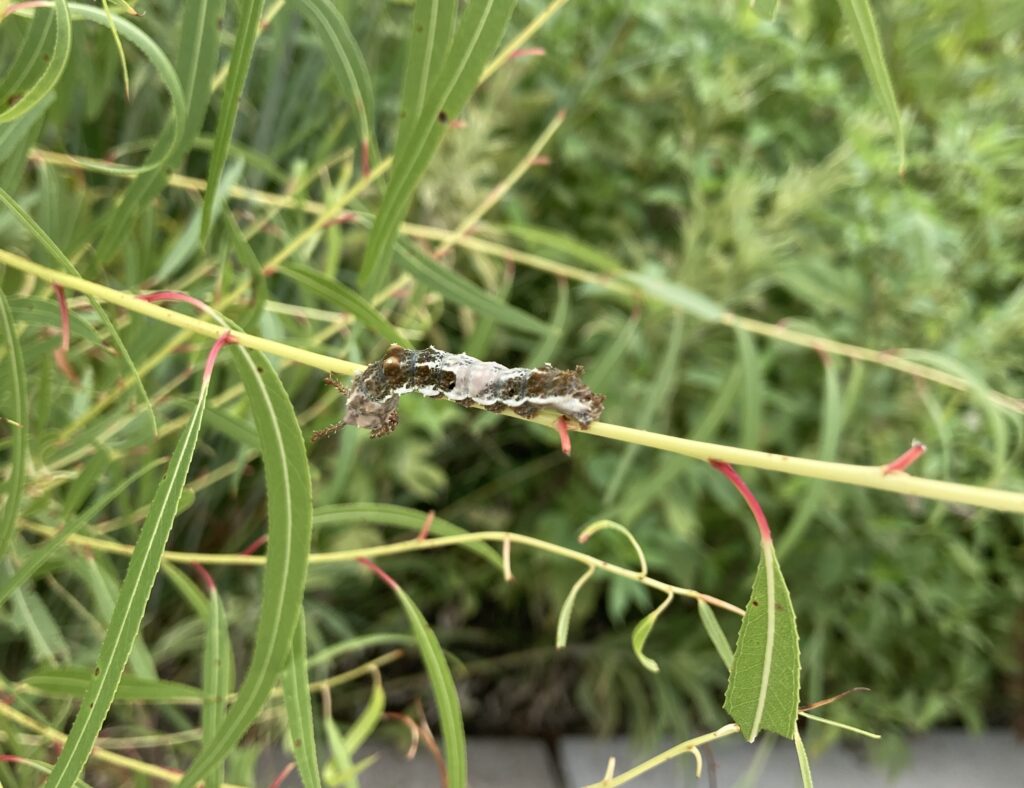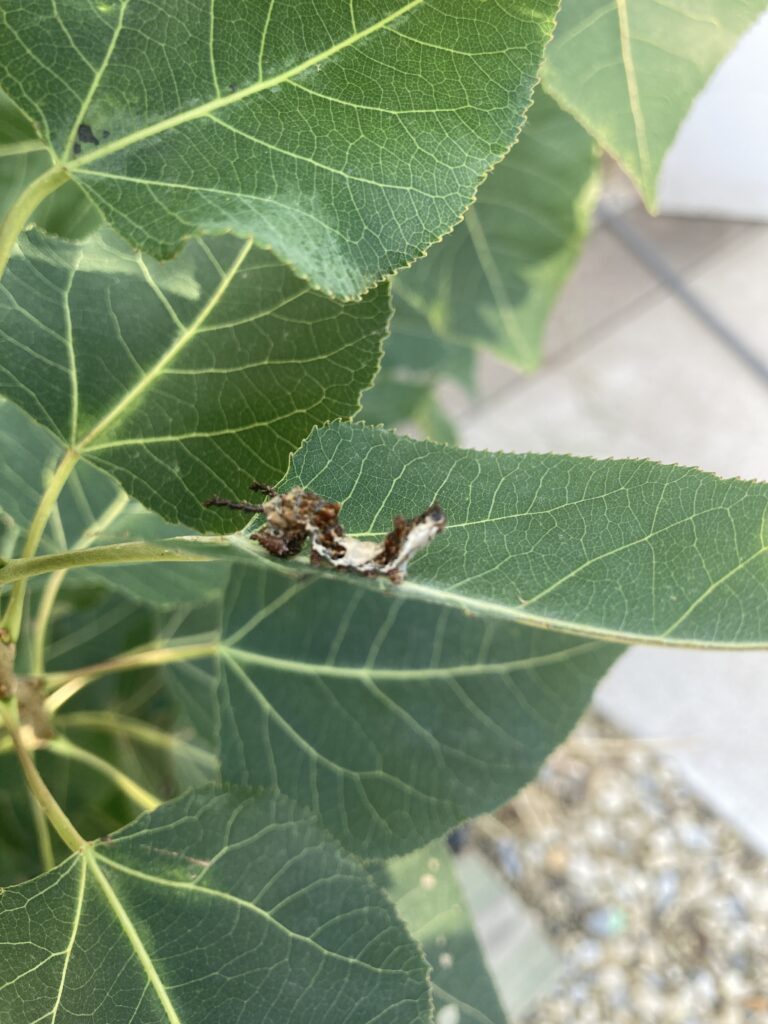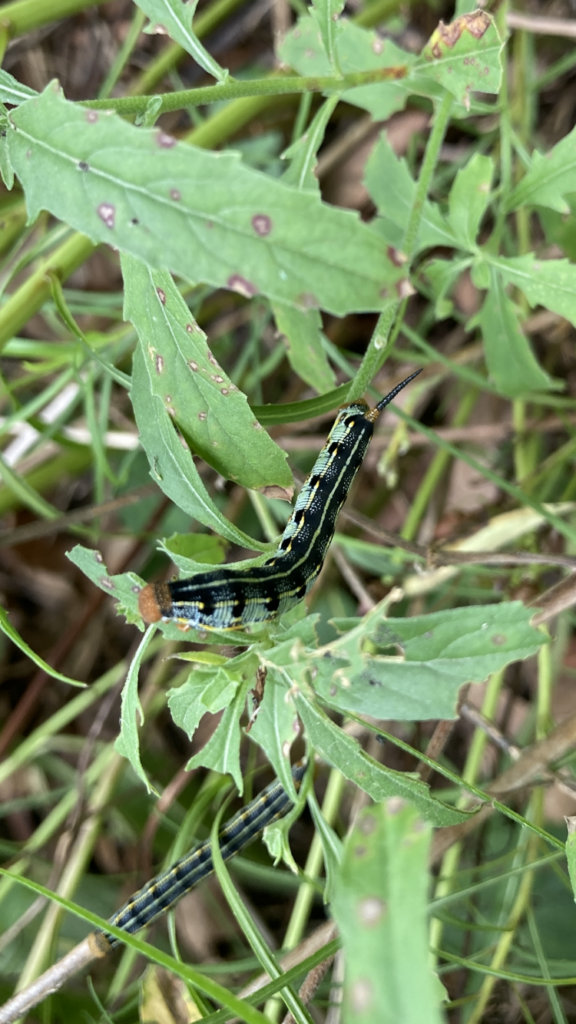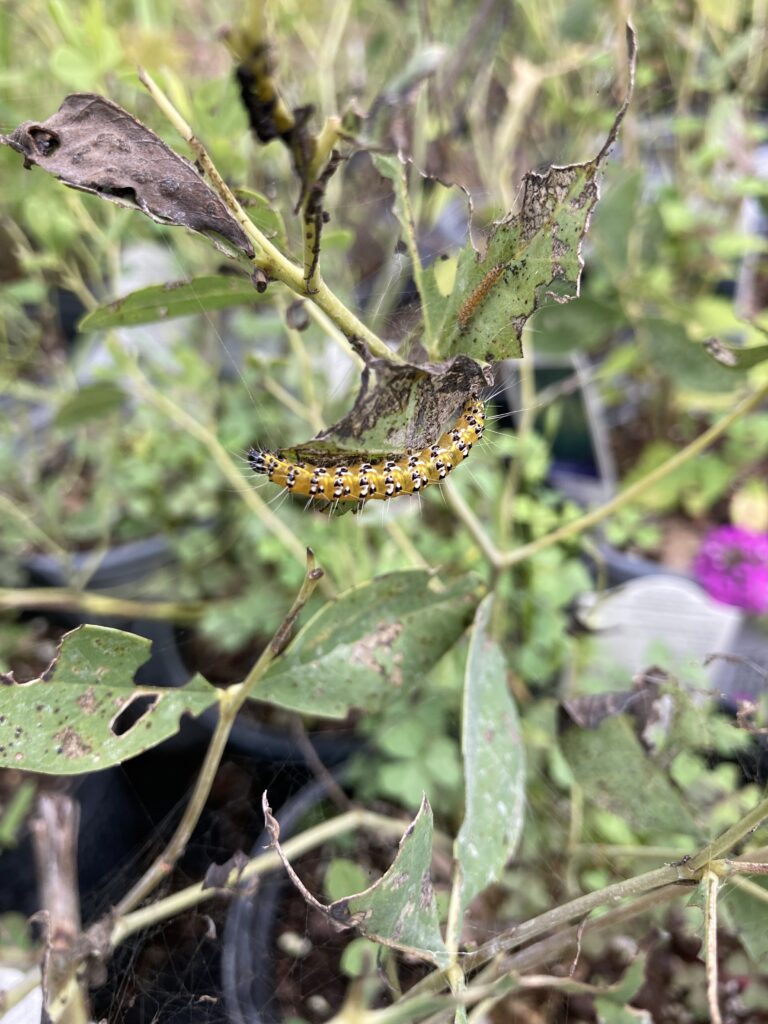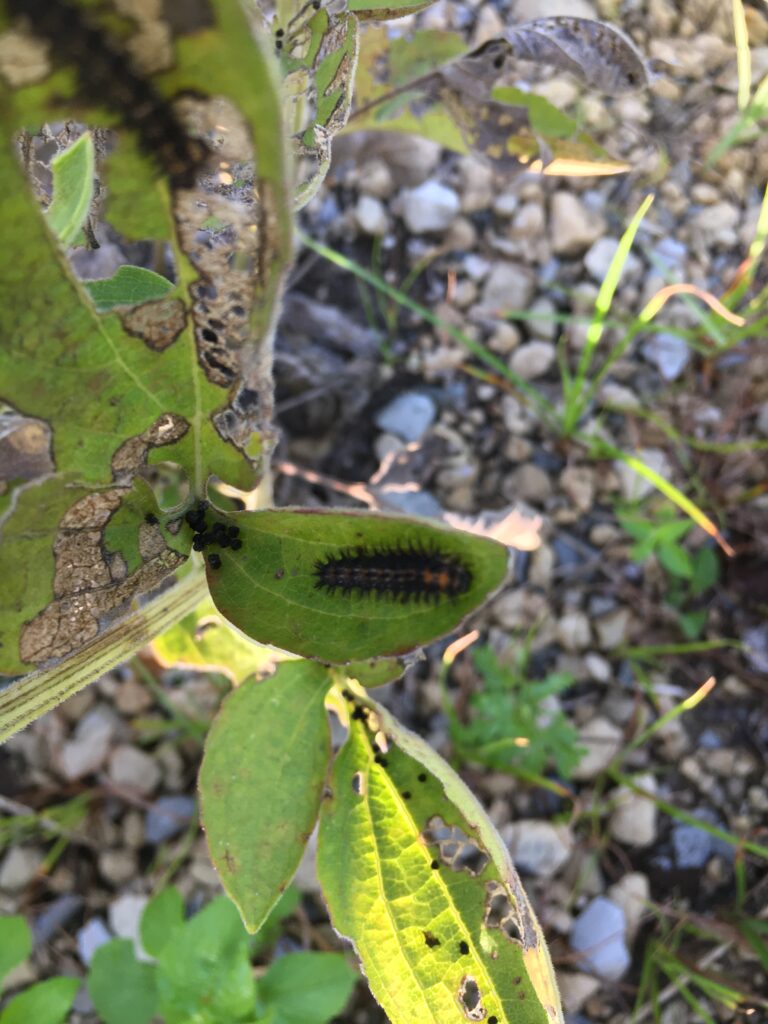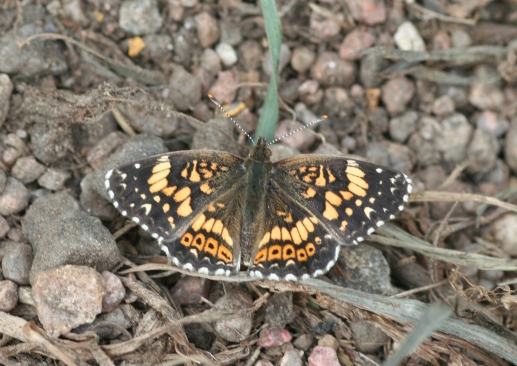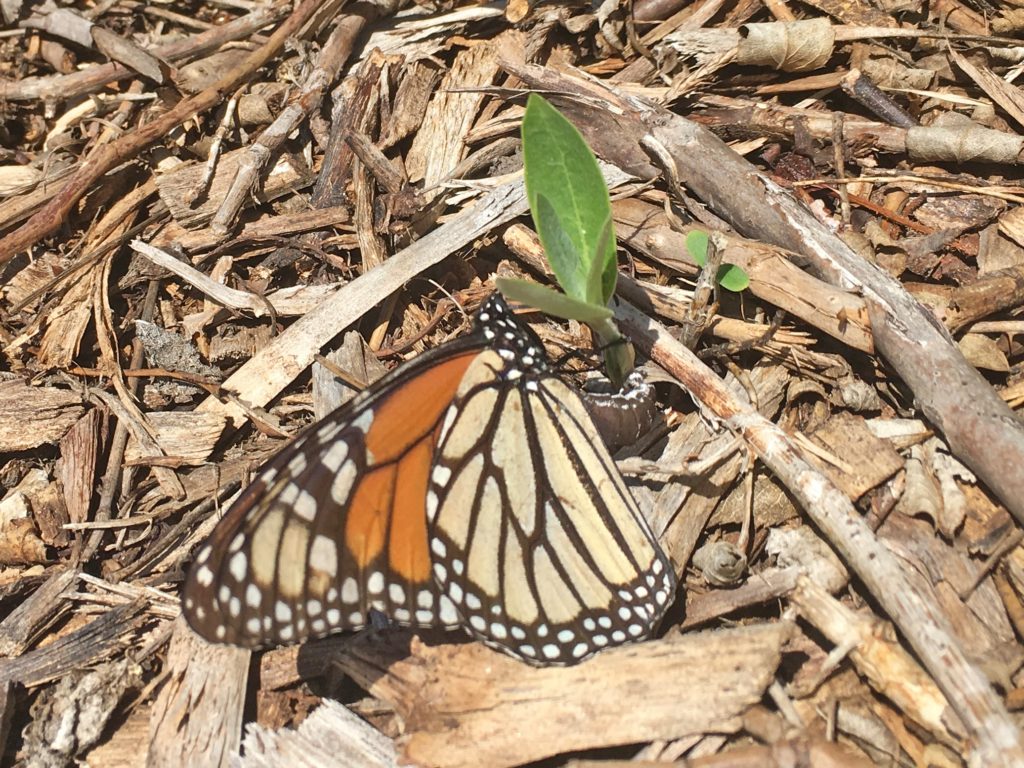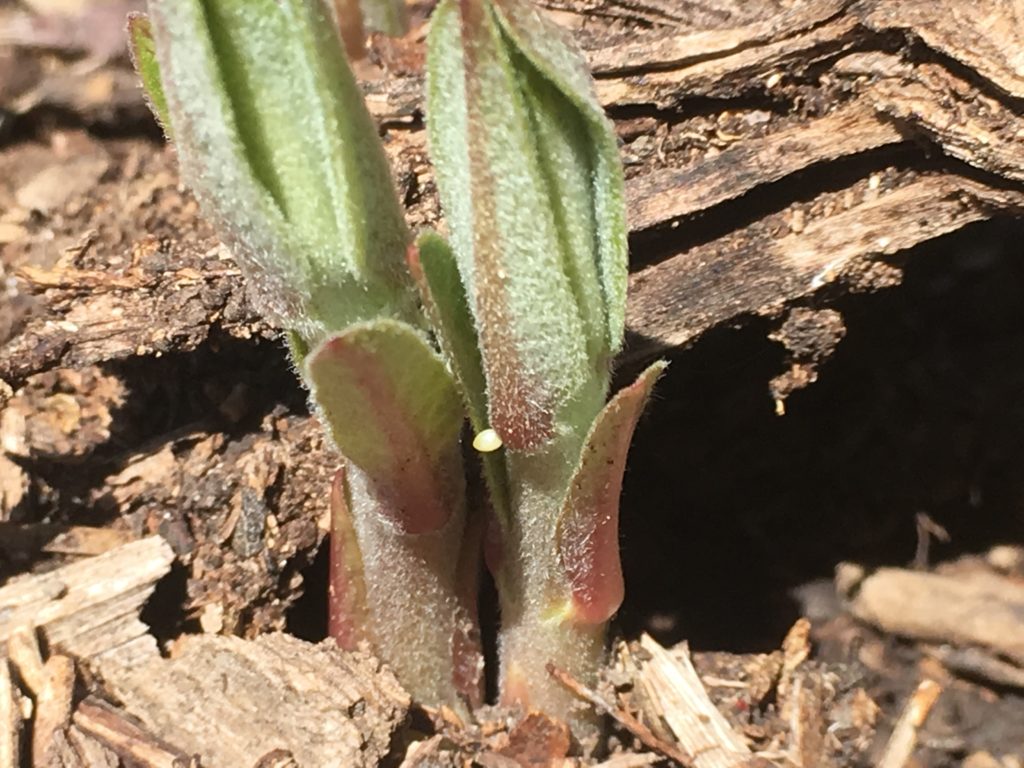No, this is not the start of an Eric Carle children’s book. It’s the start of a blog post all about gregarious feeders! Unlike the lone green caterpillar of the book that goes chomping through fruits and cakes and slices of salami, some caterpillars can be seen feeding and living in large groups, and as such are labeled ‘gregarious’. We have found many of these fascinating species on our grounds.
Tussock Moth
Milkweed is famously host to monarch caterpillars, but many other species depend on it as well. The tussock moth caterpillar is a crazy-haired and charismatic species that seems to appear out of nowhere and turn your milkweed plants into skeletons, eating an entire plant in a matter of days!
Euchaetes egle are orange, white and black, reminding me of my grandmother’s calico shag carpet from the ’70s. As nostalgic as that may be, don’t touch! Their hairs are urticating, meaning they break off into skin and cause irritation. The Latin buffs might remember that “urtica” translates to “nettle”. It is best to let them devour the plants and go on their merry way.
What about the monarchs? Will there by any milkweed left for them? The solution is always to plant more! Try several different species of milkweed to diversify your selection and increase the available habitat.
Walnut Moth Caterpillar
Just last week I noticed a black caterpillar with wispy white hairs crawling along the sidewalk near our greenhouse. Just as I stooped to get a closer look, I saw another. And another. They were everywhere! Crawling every direction on the sidewalk, in the grass, over the rocks and up the side of the building. I followed them back to their host tree, a young walnut. These were walnut moth caterpillars, Datana intergerrimma. There I found a wiggling mass of hairy caterpillars on the trunk. They hatch on the leaves, defoliate the tree with their voracious appetites, then travel down the trunk to disperse and find a bit of open soil to dig in and pupate.
Checkerspot Butterfly
In early June we get lots of calls asking “what is feeding on my Echinacea and sunflowers, and how do I kill it?”. It is usually checkerspot butterfly larvae. These small black caterpillars are lined with tufts of black hair, and they can turn leaves to lace right before your eyes! They host on plants in the Asteraceae family, and their favorites seem to be annual sunflowers and Echinacea purpurea. Through all the years we have had major populations feeding here at the Arb, our Echinacea flowers are doing just fine with no pesticide treatment. They look a little rough for a time, but recover quickly and pop up healthy and green the next spring.
Next time you see a mass of caterpillars feeding on your trees or flowers, don’t reach for the bug spray! Use a tool like the Seek app, or BugGuide.net to properly identify them. If they are native, let them continue to eat and fulfill their ecological role!
Remember, native host plants and native insects have been evolving together for thousands of years. They battle, and sometimes even benefit each other in ways we are still studying today.

